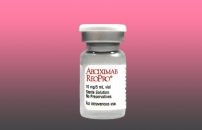The Strategic Reperfusion Early After Myocardial Infarction trial and the French Registry of Acute Myocardial Infarction 2015 suggest that pharmacoinvasive strategy compares favorably with primary percutaneous coronary intervention (PCI). This study compared the impact of pharmacoinvasive strategy with the impact of primary angioplasty in real-world patients admitted with acute coronary syndrome with ST-segment elevation. The…
Procedural Complexity Affects Decision-Making Regarding DAPT Duration
Much of the speculation around the way of individualizing dual antiplatelet therapy (DAPT) duration after coronary angioplasty has focused on clinical parameters (e. g., diabetes), but a new study published by the Journal of the American College of Cardiology (JACC) and presented at the last European Society of Cardiology (ESC) Congress warns about anatomical factors as…
Deferring Lesions by FFR in ACS: Yes or No?
Deferring treatment through angioplasty in non-ischemic lesions by fractional flow reserve (FFR) is associated with excellent long-term prognosis in patients with chronic ischemic heart disease. FFR is beginning to be used for clinical decision-making in patients with acute coronary syndromes, and its long-term effect on stable chronic patients has not been established. This…
Culotte vs. TAP in Bifurcations: Which is Better?
Courtesy of Dr. Agustín Vecchia. In treating bifurcations, the provisional stenting strategy continues to be preferred. However, a percentage of these lesions must be treated with two stents, which involves different techniques. In provisional stenting, when two stents are required, a recent consensus document of the European Bifurcation Club has recently recommended the TAP…
Contrast Induced FFR: Cost and Time Effective Alternative
Courtesy of Dr. Guillermo Migliaro. Fractional flow reserve (FFR) is the radio of two flows expressed as the ratio of two pressures ─ distal pressure across stenosis (Pd) to aortic pressure (pa) ─ obtained only under maximal coronary hyperemia, which is a state of drug induced maximal vasodilation. The gold standard to create…
Xience V: Safe in “Real-Life” Bifurcation Lesions
Courtesy of Dr. Rodrigo Abreu. INTRODUCTION Bifurcation lesion treatment has evolved considerably in the last years: from balloon angioplasty (with high occlusion and restenosis rates) to bare metal stent angioplasty (with a procedural success around 86% and major adverse cardiac events [MACE] at 1 year around 32%). The subsequent emergence of drug-eluting stents (DES) reduced…
Coronary Perforation in PCI: Associated to Negative Outcomes
Courtesy of Dr. Guillermo Migliaro. Coronary perforation (CP) is a rare but serious complication of percutaneous coronary intervention (PCI) with an estimated incidence of 0.5%. Arterial blood entering the pericardium may cause a rapid elevation of intrapericardial pressure and collapse the right cavities (tamponade) creating hemodynamic compromise. Historically, surgical drainage has been the…
A New Indicator to Assess Stenosis Severity
This study looked at the role of fractional myocardial mass (vessel-specific myocardial mass) in the assessment of stenosis physiological severity. Researchers used CT angiography to study this new concept of myocardial mass subtended by a specific vessel, which could reduce anatomical-physiological mismatch. The study included 463 patients with 724 lesions evaluated by multislice…
Intracoronary Abciximab reduces events in diabetics during PPCI
Diabetic patients have an increased risk of future cardiovascular events after an ST elevation MI. Administration of an intracoronary abciximab bolus during primary PCI could be beneficial for this high risk subgroup of patients. This study reports one year clinical outcomes and CMR imaging of patients randomized to intracoronary vs. intravenous abciximab during primary…
ABSORV at Long Term in Daily Practice Lesions
This work reports one year outcomes of the BVS Expand registry. Multiple studies have shown the safety and feasibility of the everolimus eluting bioresorbable scaffold ABSORB (Abbott Vascular, Santa Clara, California), but medium and long term data are limited and only on simple lesions. This is a prospective single-center registry assessing ABSORB performance in…
Optimal Duration of DAPT: How to Predict Long-Term Events
Courtesy of Dr. Santiago F. Coroleu. Dual antiplatelet therapy (DAPT) with aspirin and clopidogrel after percutaneous coronary intervention (PCI) reduces the risk for coronary thrombotic events (CTEs) at the expense of increasing risk for major bleeding (MB). However, the lack of information to accurately predict the occurrence of each event in out-of-hospital patients under…










